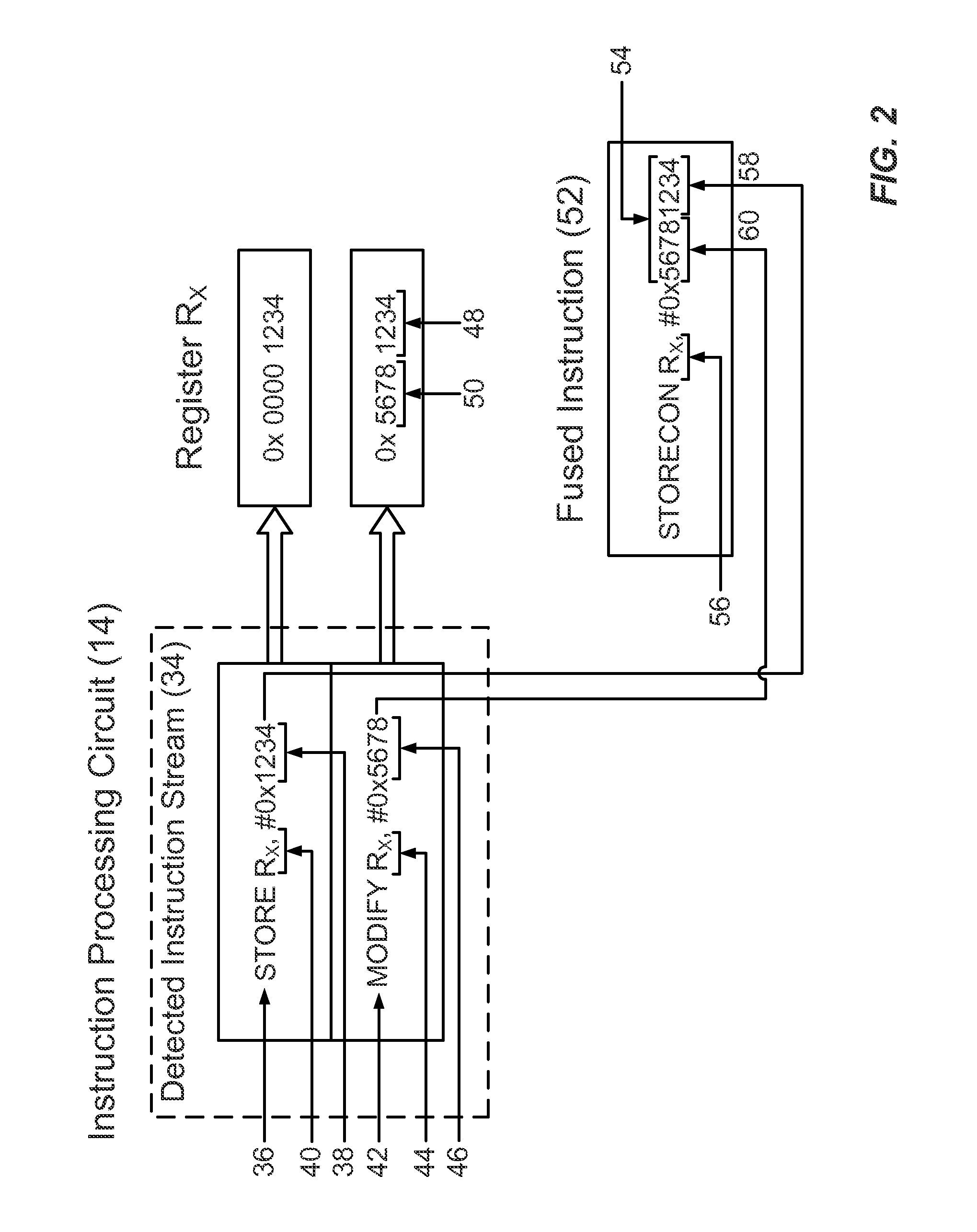Fusing Immediate Value, Write-Based Instructions in Instruction Processing Circuits, and Related Processor Systems, Methods, and Computer-Readable Media
a technology of instruction processing circuit and immediate value, which is applied in the direction of program control, computation using denominational number representation, instruments, etc., can solve the problem of unfavorable use of instruction pipelining, the condition known as a “read-after-write hazard” may arise, and the number of clock cycles required to process the immediate valu
- Summary
- Abstract
- Description
- Claims
- Application Information
AI Technical Summary
Benefits of technology
Problems solved by technology
Method used
Image
Examples
Embodiment Construction
[0024]With reference now to the drawing figures, several exemplary embodiments of the present disclosure are described. The word “exemplary” is used herein to mean “serving as an example, instance, or illustration.” Any embodiment described herein as “exemplary” is not necessarily to be construed as preferred or advantageous over other embodiments.
[0025]Embodiments of the disclosure provide fusing immediate value, write-based instructions in instruction processing circuits. Related processor systems, methods, and computer-readable media are also disclosed. In one embodiment, a first instruction indicating an operation writing an immediate value to a register is detected by an instruction processing circuit. The instruction processing circuit also detects at least one subsequent instruction that indicates an operation that overwrites at least one first portion of the register while maintaining a value of a second portion of the register. The subsequent instruction(s) are converted (o...
PUM
 Login to View More
Login to View More Abstract
Description
Claims
Application Information
 Login to View More
Login to View More - R&D
- Intellectual Property
- Life Sciences
- Materials
- Tech Scout
- Unparalleled Data Quality
- Higher Quality Content
- 60% Fewer Hallucinations
Browse by: Latest US Patents, China's latest patents, Technical Efficacy Thesaurus, Application Domain, Technology Topic, Popular Technical Reports.
© 2025 PatSnap. All rights reserved.Legal|Privacy policy|Modern Slavery Act Transparency Statement|Sitemap|About US| Contact US: help@patsnap.com



